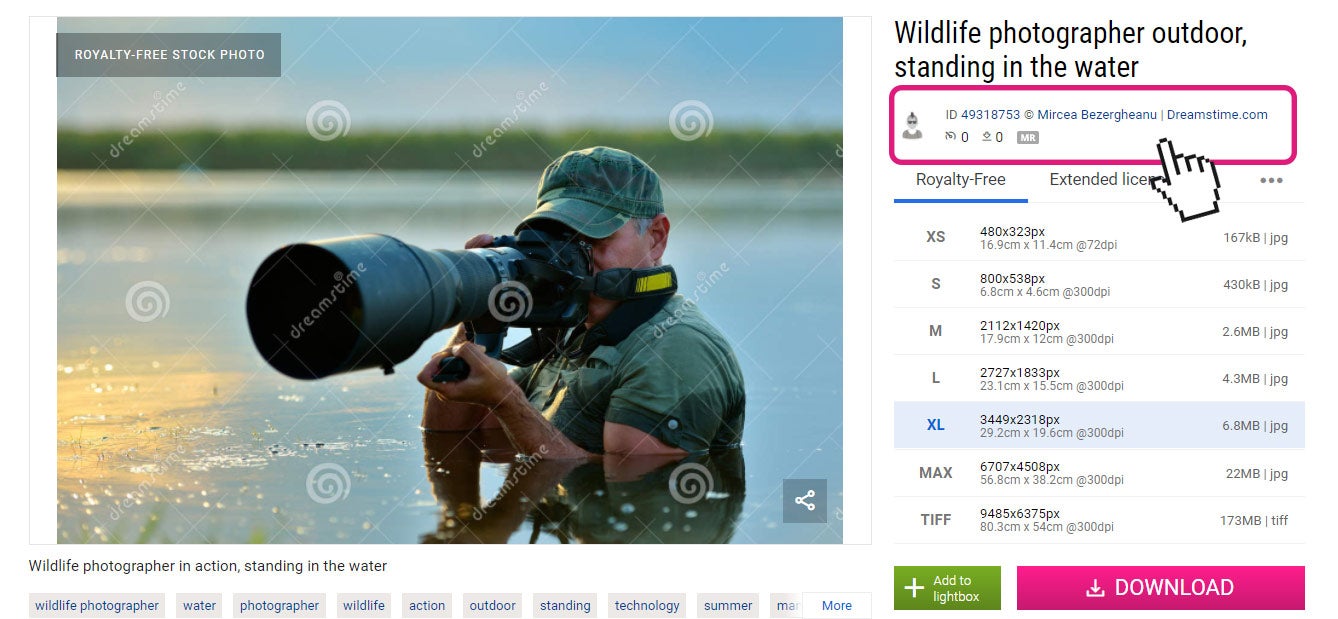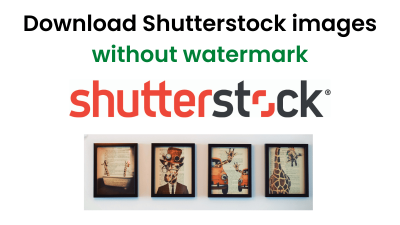Hey there! If you’re using images from Shutterstock in your creative projects—be it a blog, presentation, or design—it’s super important to give proper credit. Not only does this show respect for the original creators, but it also keeps you on the right side of copyright rules. Citing Shutterstock photos might seem tricky at first, but once you get the hang of it, it becomes second nature. In this guide, we’ll walk through how to cite these images correctly and understand what rights you have under different licenses. Let’s make sure your projects are both beautiful and legally sound!
Understanding Shutterstock License Types and Usage Rights

Before you include a Shutterstock photo in your project, it’s crucial to understand the different license types available and what they permit. Shutterstock offers mainly two license options: Standard License and Enhanced License. Knowing which one applies to your use case helps you avoid any copyright mishaps.
Standard License
The Standard License is suitable for most common uses, like digital ads, websites, social media posts, presentations, and printed materials up to 500,000 copies. Under this license, you’re allowed to:
- Use the image in online content, including social media and blogs
- Print up to 500,000 copies of your project
- Use the image in advertisements, banners, and digital marketing
However, there are some restrictions. You can’t:
- Use the image in products for resale (like t-shirts or posters)
- Incorporate the photo into your logo or trademark
- Use the image in contexts that might be considered offensive or defamatory
Enhanced License
The Enhanced License is more flexible and is necessary if you plan to use the image in products for resale, like merchandise, or if your project exceeds the Standard License limits. It grants you rights to:
- Use images in unlimited quantities for commercial products
- Incorporate images into items for resale, such as on merchandise or packaging
- Use images in broadcast, film, or large-scale advertising campaigns
Keep in mind that with both licenses, attribution isn’t always required, but it’s a good practice to credit the photographer or Shutterstock when possible, especially for creative projects or public displays. Understanding these license types helps you select the right rights for your project and ensure you’re respecting copyright laws. When in doubt, review Shutterstock’s license descriptions or consult their support for specific questions about your intended use.
Steps to Properly Cite Shutterstock Photos in Your Projects

Citing Shutterstock photos correctly is essential to respect copyright laws and give proper credit to the creators. If you’re wondering how to do it right, don’t worry—it’s pretty straightforward once you understand the steps. Here’s a simple guide to help you navigate the process:
Step 1: Identify the Necessary Information
Before you can cite a Shutterstock photo, gather all the relevant details. These typically include:
- Photographer’s Name
- Image Title or Description
- Shutterstock Image ID
- License Type (e.g., Standard or Enhanced)
- URL of the Image
- Date of Access
Most of this information can be found on the Shutterstock image page or in your licensing confirmation email.
Step 2: Choose the Correct Citation Style
Depending on your project’s requirements, you’ll need to pick a citation style such as APA, MLA, Chicago, or others. Each style has its own format, so make sure to check which one applies to your work. For example, in MLA style, a citation might look like this:
Author’s Last Name, First Name. "Image Title or Description." Shutterstock, ID Number, Accessed Date, URL.
In APA, it would be similar but with slight variations:
Author’s Last Name, First Initial. (Year). Image Title or Description [Photograph]. Shutterstock. URL
Step 3: Construct Your Citation
Using the information and style you’ve chosen, put together the citation. Here’s a quick example in MLA style:
Doe, Jane. "Sunset Over Mountains." Shutterstock, ID 123456789, accessed March 10, 2024, www.shutterstock.com/image-photo/sunset-over-mountains-123456789.
And in APA style:
Doe, J. (2024). Sunset over mountains [Photograph]. Shutterstock. https://www.shutterstock.com/image-photo/sunset-over-mountains-123456789
Step 4: Add the Citation to Your Project
Finally, insert the citation appropriately—either as a caption near the image, in a credits section, or in a bibliography, depending on your project’s format. Make sure it’s clear and accessible for your audience.
Best Practices for Including Shutterstock Photo Citations
To make sure you’re properly crediting Shutterstock photos without any hiccups, here are some best practices to keep in mind:
Be Consistent
Use the same citation style throughout your project. Consistency not only looks professional but also ensures clarity for your readers or viewers.
Place Citations Where They’re Easily Seen
Depending on your project, this could be:
- Underneath each image (caption)
- In a dedicated credits or acknowledgments section
- At the end of your document or presentation
This helps maintain transparency and gives proper credit.
Include All Necessary Details
Avoid vague citations. Always include:
- Photographer or creator’s name
- Image title or description
- Image ID or URL
- Date of access or publication
More details mean better attribution and adherence to licensing terms.
Respect Licensing Terms
Remember that Shutterstock offers different license types—Standard and Enhanced. Make sure your citation aligns with the license you purchased, especially if attribution requirements differ. Some licenses might require more detailed attribution, while others may not.
Keep Records of Your Licenses
Save your licensing confirmations and image details. This way, if any questions arise later, you’ll have proof of proper licensing and citation. It also helps in updating or revising your project in the future.
Use Clear and Accessible Language
Write your citations in a straightforward manner. Avoid jargon or overly complicated formatting. Clear citations make your work look professional and demonstrate your respect for intellectual property.
By following these best practices, you’ll ensure that your creative projects stay compliant, respectful, and well-cited. Proper attribution is more than just a legal requirement—it’s a way to honor the hard work of photographers and creators around the world.
Examples of Proper Shutterstock Photo Citations
Getting the hang of citing Shutterstock photos correctly can seem tricky at first, but seeing some clear examples makes it much easier. When you cite an image from Shutterstock, the goal is to give proper credit, including the creator’s name, the image title (if available), and the license type. Here are some examples to guide you:
Example 1: Basic Image Citation
In-text citation: Photo by Jane Doe on Shutterstock
Full citation for a project or publication:
| Details | Example |
|---|---|
| Photographer’s Name | Jane Doe |
| Image Title | Sunset over Mountains |
| Source | Shutterstock |
| License Type | Royalty-Free |
| URL | https://www.shutterstock.com/image-photo/sunset-over-mountains-123456789 |
Sample citation:
Jane Doe. Sunset over Mountains. Shutterstock, Royalty-Free license. https://www.shutterstock.com/image-photo/sunset-over-mountains-123456789
Example 2: Citing an Image with a Creator’s Name and Image Title
In-text: Photo by John Smith on Shutterstock
Full citation:
John Smith. City Skyline at Night. Shutterstock. Royalty-Free license. https://www.shutterstock.com/image-photo/city-skyline-night-987654321
Example 3: When No Title Is Available
If the image doesn’t have a specific title, you can describe it briefly:
In-text: Photo by Alex Johnson on Shutterstock
Full citation:
Alex Johnson. Untitled cityscape photograph. Shutterstock, Royalty-Free license. https://www.shutterstock.com/image-photo/untitled-cityscape-135792468
Remember, the key is consistency. Decide on a citation style (like APA, MLA, or Chicago) and stick with it throughout your project. The main idea is to clearly acknowledge the creator and the source so your work remains transparent and respectful of copyright.
Common Mistakes to Avoid When Citing Shutterstock Images
Even experienced creators can slip up when it comes to image citations. Here are some common mistakes to watch out for—and how to avoid them:
1. Forgetting to Include the Creator’s Name
This is a big one. Not crediting the photographer or artist properly can lead to copyright issues. Always make sure to include the creator’s name if available. If the creator isn’t listed, note that the image is from Shutterstock but try to find any additional attribution info.
2. Omitting the License Type
Shutterstock offers different license types, like Standard or Extended. Failing to specify the license can cause confusion or legal problems later. Always mention the license type you purchased or are using, such as “Royalty-Free” or “Enhanced License.”
3. Using the Wrong URL
Make sure the link you include points directly to the image or the Shutterstock page where the image is hosted. Using generic or incorrect URLs can mislead others or make it hard for them to verify your citation.
4. Not Following a Consistent Citation Style
Mixing citation formats (like switching between APA and MLA) can look unprofessional and cause confusion. Pick a style that fits your project or publisher guidelines and stick with it.
5. Failing to Double-Check Licensing Restrictions
Some Shutterstock images have restrictions on commercial use, modifications, or distribution. Always review your license agreement and ensure your citation and usage comply. Failing to respect these terms can lead to legal trouble.
6. Ignoring Image Titles or Descriptions
If an image has a title or description, include it in your citation. Leaving it out might make your attribution less complete, especially if the image is known by a specific name.
7. Not Giving Credit When Required
While Shutterstock’s licensing often doesn’t require attribution for royalty-free images, some license types or specific projects (like academic papers) do. Always check your license terms and give credit when necessary.
By avoiding these common pitfalls, you not only stay compliant with copyright law but also show respect for the creators whose work you’re using. Proper citations build trust with your audience and uphold your professional integrity.
Additional Tips for Managing Image Credits in Creative Projects
Effectively managing image credits is essential to maintain professionalism and ensure proper attribution when using Shutterstock photos in your creative projects. Here are some practical tips to help you stay organized and compliant:
- Create a Centralized Credit Log: Maintain a document or spreadsheet where you record all images used, including the Shutterstock image ID, photographer name, license type, and the exact credit line. This helps avoid missing attributions and simplifies updates or revisions.
- Use Consistent Credit Formats: Develop a standard format for your image credits to ensure uniformity across your project. For example: Photo by [Photographer Name] on Shutterstock.
- Automate Where Possible: Utilize tools or plugins that can automatically generate image credits based on your image metadata or licensing information, reducing manual effort and errors.
- Keep Licensing Information Accessible: Store licenses and permissions in an organized manner, making it easy to verify attributions and ensure compliance, especially when sharing or distributing your project.
- Educate Your Team: If working with a team, ensure everyone understands the importance of proper image attribution and follows your established processes.
Sample Credit Table
| Image ID | Photographer | License Type | Credit Line |
|---|---|---|---|
| 123456789 | Jane Doe | Standard License | Photo by Jane Doe on Shutterstock |
| 987654321 | John Smith | Enhanced License | Photo by John Smith on Shutterstock |
By implementing these tips, you can streamline the management of image credits, ensure compliance with licensing agreements, and uphold the integrity of your creative projects. Proper attribution not only respects the rights of photographers but also enhances the professionalism of your work.


